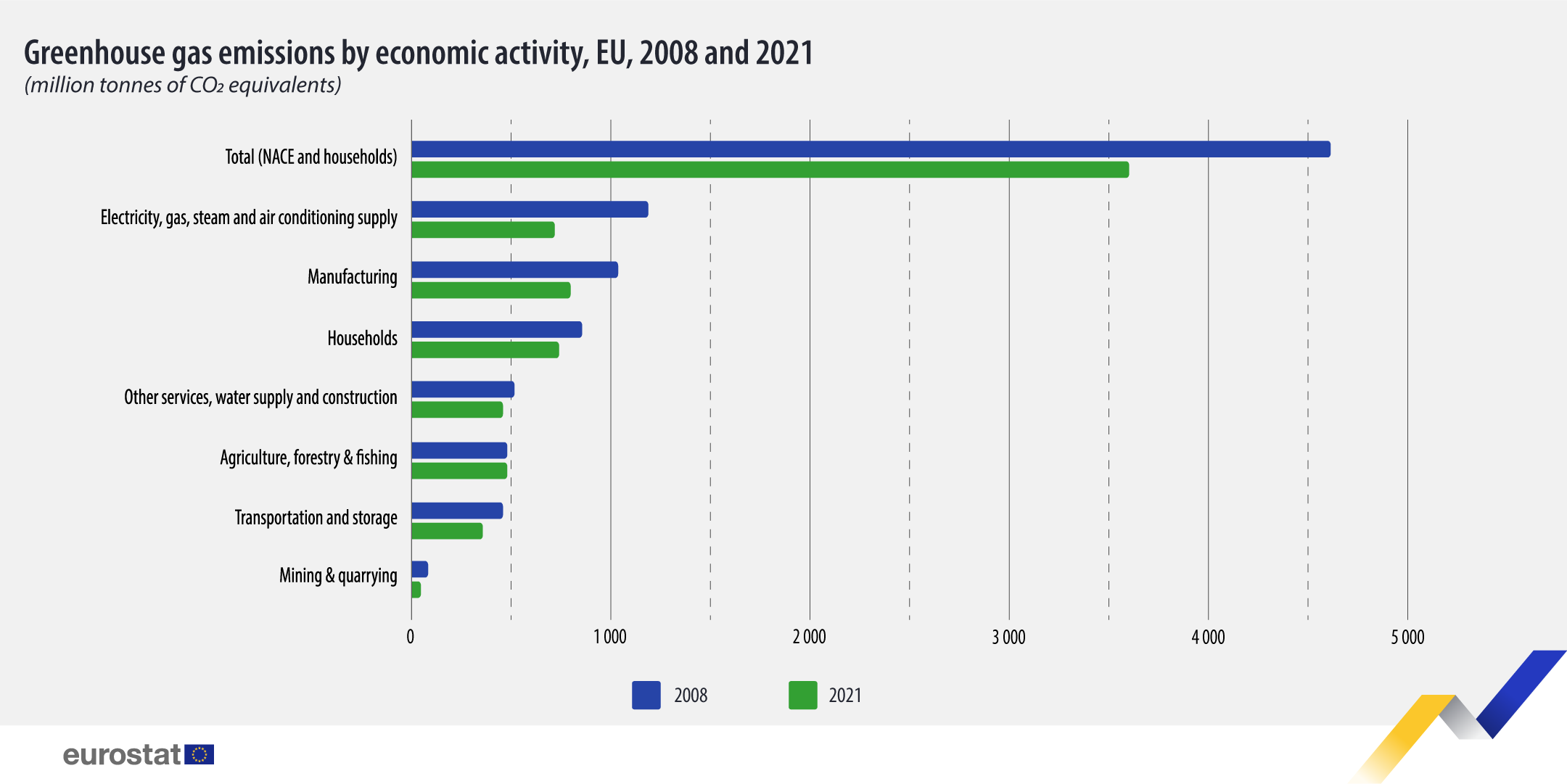EU economy emissions in 2021: -22% since 2008
.jpg)
In 2021, greenhouse gas (GHG) emissions generated by economic activities of EU resident units stood at 3.6 billion tonnes of CO2 equivalents (CO2-eq). Compared with 2008, there was a 22% decrease.
The activity with the highest GHG emissions in 2021 was the manufacturing industry (800 million tonnes of CO2-eq; representing 22% of total greenhouse gases emitted), followed by households (740 million tonnes of CO2-eq; 21%) and the supply of electricity, gas, steam and air conditioning (720 million tonnes of CO2-eq; 20%). Households emit greenhouse gases for transportation, heating and other purposes.
Source dataset: env_ac_ainah_r2
Between 2008 (the first available year of data) and 2021, the largest relative decrease of GHG emissions was recorded in mining and quarrying (-42%), followed by the supply of electricity, gas, steam and air conditioning (-39%) and manufacturing (-23%).
The largest absolute decrease of GHG emissions was recorded in the supply of electricity, gas, steam and air conditioning (from 1.2 billion tonnes of CO2-eq in 2008 to 720 million tonnes of CO2-eq in 2021; -468 million tonnes of CO2-eq), followed by manufacturing (from 1 billion tonnes of CO2-eq to 799 million tonnes of CO2-eq; -238 million tonnes of CO2-eq) and households (from 854 million tonnes of CO2-eq to 740 million tonnes of CO2-eq; -114 million tonnes of CO2-eq).
The source for these estimates is the air emissions accounts. They offer detailed data by 64 emitting production activities (classified by NACE Rev. 2) as well as households, as defined and classified within national accounts. For the purpose of this article, these 64 production activities have been further aggregated into 6 groups of economic activities.
For more information
- Statistics Explained article on greenhouse gas emission statistics - air emissions accounts
- Thematic section on environment
- Database on environment
Methodological notes:
- Greenhouse gases cause climate change. The so-called ‘Kyoto basket’ of greenhouse gases includes carbon dioxide (CO2), methane (CH4), nitrous oxide (N2O) and fluorinated gases. They are expressed in a common unit, CO2-equivalents.
If you have any queries, please visit our contact us page.

